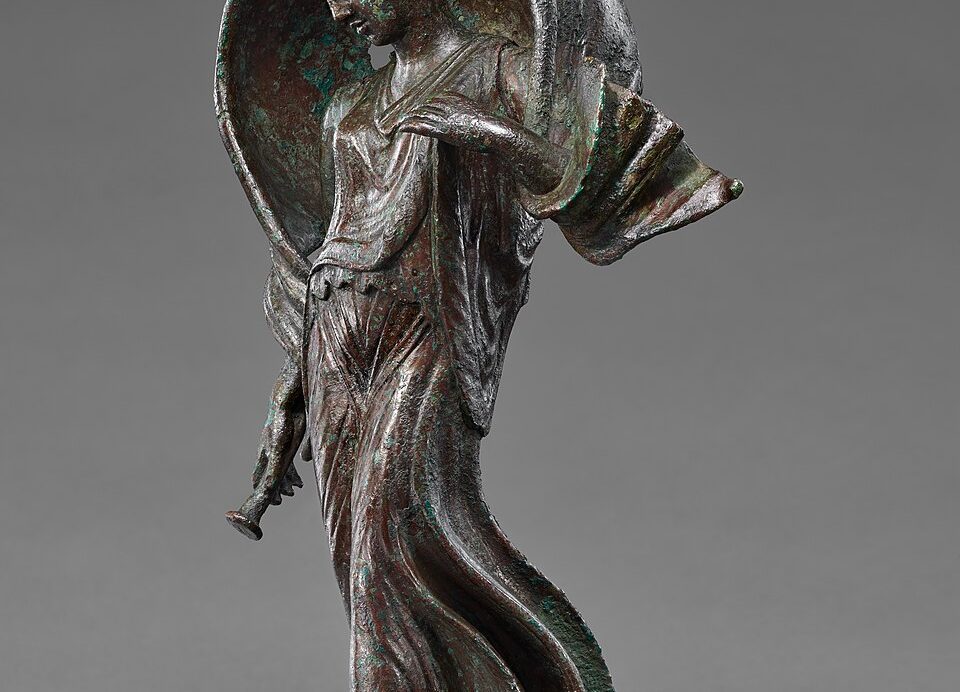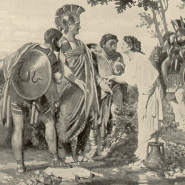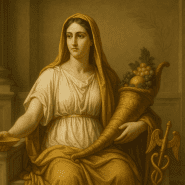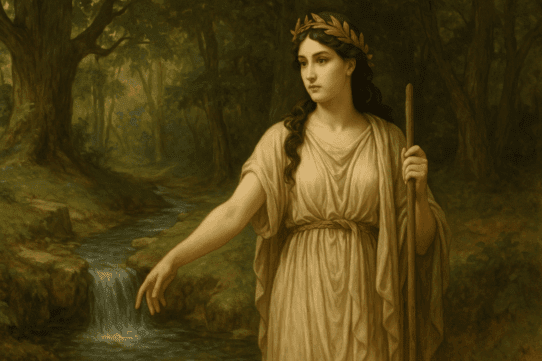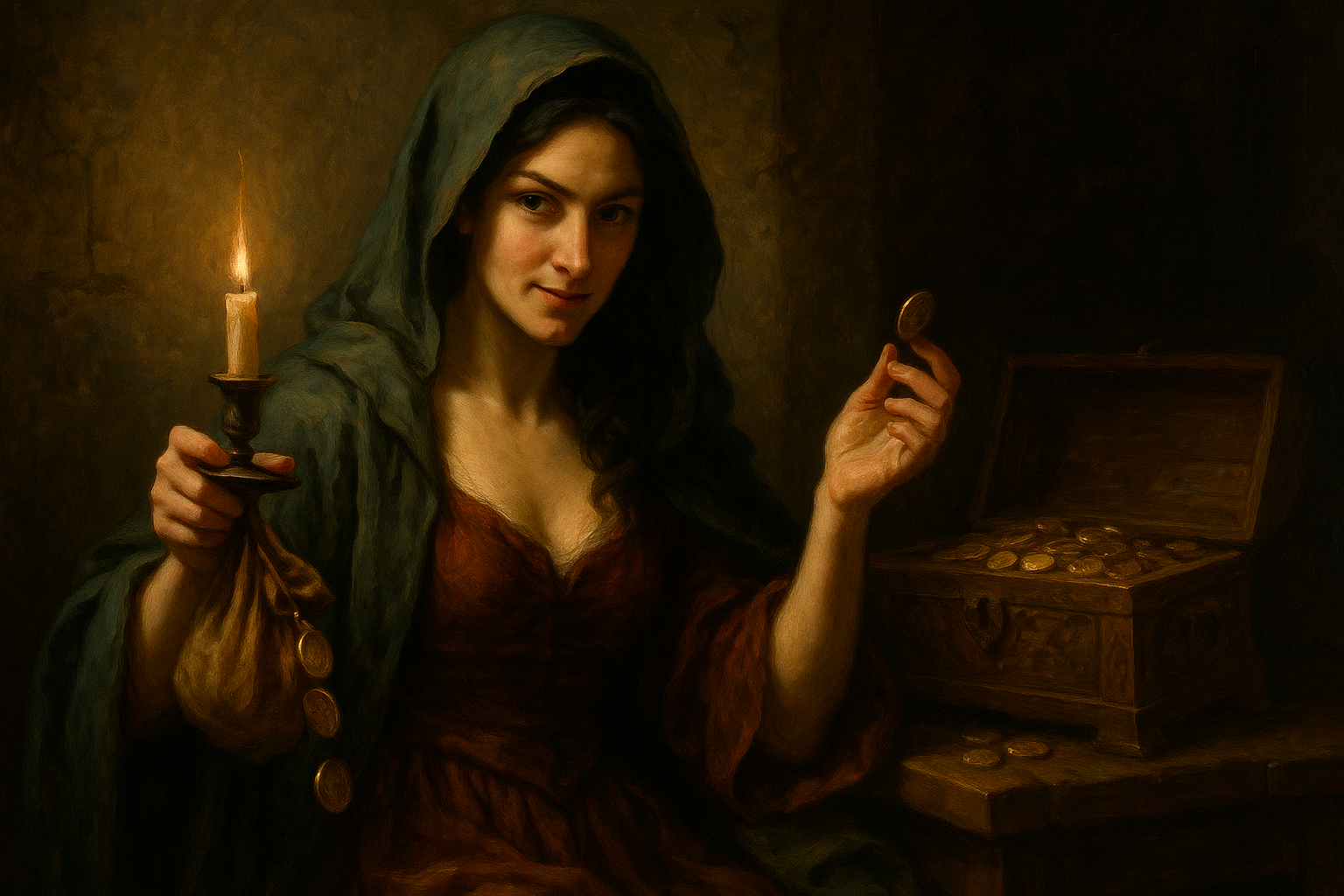Among the many deities who shaped the rhythm of the Roman world, few held as gentle yet powerful an influence as Luna, the radiant goddess of the Moon. Her presence was constant and cyclical, rising each night to cast her silver light across fields, temples, and city streets. To the Romans, Luna was more than a celestial body. She was a divine force who governed time, guided travelers in darkness, and embodied the mysterious beauty of the night sky.
Unlike some Roman deities whose stories blur or fade through time, Luna remained luminous in art, poetry, and religious practice. She was worshipped as the personification of the Moon itself, a goddess whose nightly journey marked the passage of months and seasons. In many ways, she was the serene counterpart to Sol, the god of the Sun, completing the celestial cycle that framed Roman life.
Luna’s Divine Identity
Luna occupied a unique position in Roman religion because she was both a personified deity and a cosmic phenomenon. When Romans looked upward and saw the glowing orb moving across the sky, they did not separate the physical Moon from the goddess who animated it. This dual identity made Luna a powerful presence in both mythology and ritual.
She was often depicted riding a two-horse chariot called a biga, her crescent-shaped crown symbolizing the lunar phases. Her countenance was serene, her clothing flowing like pale light. As a goddess of cycles, she represented renewal, transition, and the quiet constancy that balanced the brilliance of daylight.
Relationship to Diana and Trivia
Luna is part of a triad of lunar-associated goddesses in Roman tradition: Luna, Diana, and Trivia (Hecate). Each governed different aspects of the Moon’s influence.
Luna ruled the cosmic and celestial Moon.
Diana oversaw the earthly, natural realm: forests, animals, and the Moon’s influence on women and fertility.
Trivia, linked to crossroads and the mysteries of night, represented the Moon’s more hidden, liminal aspects.
Together, these three goddesses embodied the Moon’s physical, natural, and mystical dimensions. Yet Luna herself remained the pure, bright symbol of the Moon’s outward, visible beauty.
The Temple of Luna on the Aventine
Luna’s significance within Rome was affirmed through her sanctuary on the Aventine Hill, a temple said to have existed since the early Republic. Its dedication date was the 31st day of March, a day associated with renewal and transition, fitting for a goddess who presided over cycles.
The temple became a place where Romans honored celestial order. Farmers prayed to Luna for favorable timing in planting and harvesting. Women sought her blessing for fertility and regular cycles. Sailors and travelers invoked her guidance during night journeys. Her temple was a beacon of calm, a space where the rhythms of nature met the hopes of the city.
Luna’s Role in Roman Timekeeping
The Moon shaped the Roman calendar long before solar reforms aligned it with the seasons. Months were originally measured from one new moon to the next, and Luna’s cycles served as the essential framework for marking time.
Even after calendar reforms, Luna’s influence endured. Festivals, religious observances, and agricultural routines were tied to the Moon’s phases. The waxing moon symbolized growth, new beginnings, and hope, while the waning moon suggested introspection, closure, and preparation.
Luna’s movements gave structure to Roman life, reminding the people that the heavens themselves governed time.
Symbolism and Meaning in Roman Life
Luna symbolized tranquility, reflection, and the unseen forces that shape the world. In contrast to the assertive brilliance of Sol, her light softened the night without banishing it completely. This delicate balance made her a symbol of subtle power.
Her associations included rhythm, intuition, dreams, feminine energy, and the natural cycles that govern the earth. Artists depicted her as gentle yet commanding, a reminder that some of the most influential forces in life operate quietly and steadily.
Luna also became a guardian of thresholds, appearing at the edges of day and night. Her rise signaled rest, contemplation, and the shift from labor to stillness.
Luna in Roman Mythology and Literature
While Luna does not feature in as many narrative myths as more humanlike deities, her presence is woven through the literature of Rome. Poets invoked her to mark transitions or set a nocturnal mood. Historians referenced her as a force whose signs and omens influenced decision-making. Astrologers charted her phases to predict future events.
Perhaps the closest parallel to a mythic tale is her association with Selene, her Greek counterpart, whose romantic story with Endymion became deeply influential. In Roman adaptation, the gentle moon goddess gazed lovingly upon a beautiful shepherd cast into eternal sleep. Though more Greek in origin, this tale enriched the Roman imaginative landscape and gave Luna a more personal dimension.
Luna’s Enduring Legacy
Luna’s legacy persisted long after the decline of Roman religion. Her name lived on through words like “lunar,” “lunation,” and “lunacy,” the latter reflecting ancient beliefs about the Moon’s influence on human behavior. Her symbolism remains embedded in Western art, literature, and even scientific discourse.
Modern depictions of the moon often draw subconsciously from Luna’s imagery: the crescent rising like a diadem, the glowing orb watching over a sleeping world, the sense of quiet magic her light evokes. She remains a symbol of serenity, mystery, and the cyclical nature of time.
Though she was not a goddess of dramatic myths or divine conflicts, Luna shaped Roman belief in profound ways. In her gentle glow, Romans saw order, renewal, and the dependable beauty of the sky.



